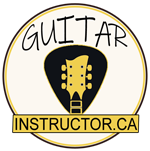
Self Taught Guitar: The Ultimate Guide to Learning on Your Own
If you have ever dreamed of playing the guitar but have been intimidated by the thought of formal lessons or expensive classes, fear not.
Learning to play the guitar on your own is not only possible, but also a rewarding and enjoyable experience. With dedication, practice and the right resources, you can become a proficient guitarist without ever setting foot in a formal music school.
In this comprehensive guide, we will discuss the essential steps and tips for teaching yourself to play the guitar. From choosing the right instrument to mastering chords and scales, this guide will provide you with all the information you need to embark on your self-taught guitar journey.
Choosing the Right Guitar
The first step in learning to play the guitar on your own is choosing the right instrument. There are several types of guitars to choose from, including acoustic, electric and classical. Acoustic guitars are great for beginners, as they are versatile and can be played unplugged.
Electric guitars, on the other hand, require an amplifier and are commonly used in rock and pop music. Classical guitars have nylon strings and are often used for classical, flamenco and fingerstyle music.
Once you have selected the type of guitar that best suits your musical interests, it is important to choose a guitar that fits your budget and feels comfortable in your hands.
Look for a guitar that is well-constructed, has a solid top and plays easily. It is also a good idea to visit a music store and try out different guitars before making a purchase.
Your musical adventure starts here. Sign up for guitar lessons in Edmonton!
Learning the Basics
Before you can start playing your favorite songs, it is important to learn the basic fundamentals of guitar playing. This includes learning how to hold the guitar properly, how to tune the instrument and how to read guitar tabs and chord charts.
Holding the guitar correctly is essential for producing clear and accurate sounds. Make sure to sit up straight and hold the guitar against your body with the right arm resting on the top of the instrument. Your left hand should be positioned on the neck of the guitar, while your right hand should be free to strum or pick the strings.
Tuning the guitar is also an important skill to learn, as it ensures that your instrument produces the correct notes and chords. There are several ways to tune a guitar, including using a tuner, tuning fork or online tuning app. Whichever method you choose, make sure to tune your guitar every time you play to ensure that it sounds its best.
Once you have mastered the basics of holding and tuning the guitar, it is time to learn how to read guitar tabs and chord charts. Guitar tabs are a simplified form of musical notation that shows you where to place your fingers on the strings to play specific notes and chords.
Chord charts, on the other hand, show you how to play certain chords by indicating where to place your fingers on the fretboard. Learning to read tabs and chord charts will give you the necessary foundation to start learning songs and melodies on the guitar.
Elevate your guitar skills. Join our Edmonton guitar lessons now!
Learning Chords and Scales
One of the most important aspects of learning to play the guitar is mastering chords and scales. Chords are the building blocks of music and are essential for playing songs and creating your own music. Scales, on the other hand, are a series of notes that are played in a specific order and are used to create melodies and solos.
There are several basic chords and scales that every guitarist should learn, including the open chords (C, D, E, G, A) and the pentatonic scale.
Open chords are played using open strings and are commonly used in folk, pop and rock music. The pentatonic scale is a five-note scale that is widely used in blues, rock and jazz music.
In addition to open chords and the pentatonic scale, it is also important to learn barre chords and the major and minor scales. Barre chords are moveable chord shapes that allow you to play chords in different keys, while the major and minor scales are fundamental to understanding harmony and melody.
Practicing regularly and consistently is the key to mastering chords and scales. Set aside time each day to practice and experiment with different chord progressions and scale patterns.
As you become more comfortable with these fundamental building blocks of music, you will be able to play a wider variety of songs and create your own music.
Learning Songs and Techniques
Once you have a solid grasp of the basic chords and scales, it is time to start learning songs and techniques. There are countless resources available for learning songs on the guitar, including online tutorials, guitar tab websites and songbooks.
Choose songs that you enjoy and that are within your skill level, and start practicing them at a slow and steady pace.
In addition to learning songs, it is important to develop proper technique and playing habits. This includes learning how to strum and pick the strings with accuracy and precision, as well as mastering techniques such as hammer-ons, pull-offs and slides. Techniques such as these are essential for creating expressive and dynamic guitar playing.
As you continue to learn songs and techniques, it is important to challenge yourself and push your boundaries. Experiment with different styles of music, explore new techniques and set goals for yourself to keep motivated and inspired. The journey of learning to play the guitar is a lifelong pursuit, and there is always something new to learn and explore.
Ready to master the guitar? Book your Edmonton Guitar Lessons today and start playing your favorite tunes!
Building a Repertoire and Performing
Once you have developed a solid repertoire of songs and techniques, it is time to start performing and sharing your music with others.
Whether it is playing for friends and family, jamming with other musicians or performing in front of an audience, playing the guitar is a deeply rewarding and fulfilling experience.
Sharing your music with others is not only a great way to improve your skills, but also a way to connect with others and create memorable experiences.
In conclusion, learning to play the guitar on your own is entirely possible and can be a deeply rewarding and enjoyable experience. By choosing the right instrument, learning the basics, mastering chords and scales, and learning songs and techniques, you can become a proficient guitarist without ever setting foot in a formal music school.
With dedication, practice and the right resources, the journey of teaching yourself to play the guitar is an enriching and fulfilling pursuit. So grab your guitar, start practicing and let the music begin!
Choosing the Right Guitar
Learning the Basics
Holding the Guitar
Tuning the Guitar
Reading Guitar Tabs and Chord Charts
Learning Chords and Scales
Basic Chords and Scales
Barre Chords and Major/Minor Scales
Practicing Chords and Scales
Learning Songs and Techniques
Resources for Learning Songs
Developing Proper Technique
Challenging Yourself
Building a Repertoire and Performing
Sharing Your Music with Others
Conclusion
[ad_2]
